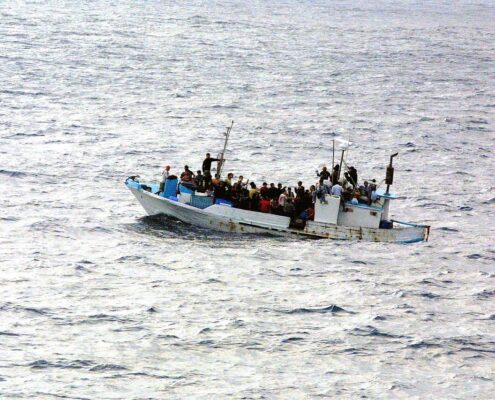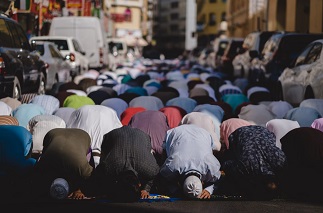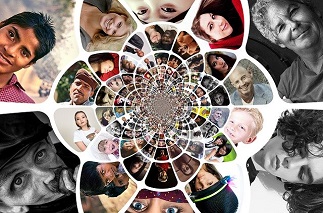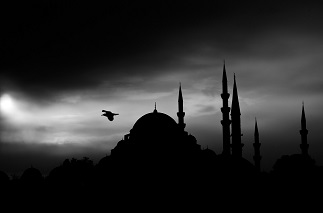Posts

Journalism on Forced Migration in Latin America: Recommendations from Experts and International Journalism Guides from a Qualitative Study
Wars, insurgent groups, dictatorships, and economic crises are the main reasons for forced migration. Displaced persons, asylum seekers, and refugees often face public stigmatization, as they are treated by the media as a social problem and, in many cases, seen as economic and social threats. This article presents the results of in-depth interviews with expert journalists and researchers from different Latin American countries on the phenomenon of forced migration and its journalistic coverage. Their recommendations are complemented by Qualitative Document Analysis (QDA) of international guides on migration journalism. The findings highlight the need for training and awareness-raising in critical skills and social analysis for journalists to understand the complexity of human mobility and approach it from a human rights perspective, as well as to project the positive contributions of migrants to the host society. Findings suggest the need to avoid disseminating and magnifying hate speech, which may be used to justify discrimination and violence against migrants. This highlights the fact that migration issues must be dealt with under slow journalism schemes, with an emphasis on research, thus avoiding falling into xenophobic discourse due to the very immediacy that the digital ecosystem demands.

The Process of The Transfer of Hate Speech to Demonization and Social Polarization
We are living through a time of major political changes due to the rise of populist leaders and the resurgence of extreme ideological movements. The emergence of this phenomenon is due, to a large extent, to the ease with which these political actors can disseminate and spread their messages without any limits through social networks, leaving aside the former “fourth power” of the media as filterers and reinterpreters of information. Generally, the formula used by these leaders and movements is usually based on symbolic social division and polarization through hate speeches that allow demonizing their adversaries while antagonizing the issuers: a discursive “us” against “them” based on verbal violence to dehumanize an “exogroup.” We want to discuss the importance of understanding the process of communicational transfer—which begins with hate speech and evolves into demonization and social polarization—as a strategic basis for creating an ideal scenario for the growth and strengthening of populist discourse, which is reductionist and simplifying in nature.

Symbolic-discursive violence and new media: An epistemological perspective
The following research studies, from a theoretical perspective, the different forms of symbolic and discursive violence and the transmission of hate speech through new media. The main objective is to understand the consequences of symbolic violence through language and how this affects freedom of expression. Reflective and critical argumentation is highlighted through an exploratory analysis carried out by a literature review, where it is determined that the confrontational narrative used by the media contributes to the dehumanization, demonization and polarization of specific collectives.

The Demonization of Islam through Social Media: A Case Study of #Stopislam in Instagram
This article studies the process of demonization, its consequences, and how social media contribute to the formalization of its axiology. The demonization of societies aims to create social subjects that fit into the idea of the “other” by exposing them to compulsory invisibility. This research’s main objective was to examine how demonization is used as a weapon of oppression to devalue specific individuals through the hashtag #StopIslam and Instagram’s role in this process. The methodology used for this purpose has consisted of an empirical and quantitative analysis of the most recent (1 January 2020–31 July 2020) posts on Instagram with #StopIslam, analyzing the images and the content. The study has determined how, through social media manipulation, erroneous ideas are transmitted that prevent the Islamic collective’s integration, especially in European countries. The conclusions will reflect hate speech and how the Islamic world’s demonization results in the Muslim community’s stigmatization, racism, and Islamophobia. Although there are different articles related to demonization and hate speech, there are not many scientific resources that explain these variables on Instagram and how it affects the inclusion of the Muslim community in Europe, significantly when the time spent on the Internet is growing.

Otherness as a form of intersubjective social exclusion: Conceptual discussion from the current communicative scenario
This study aims to review the theory based on «otherness» as a form of social exclusion and symbolic violence from the constructions of realities of the media, with particular emphasis on the ethics and aesthetics of language and its role in materializing identity differences. A search for specific criteria and boolean algorithms is carried out in Web of Science and Scopus on «otherness» [AND] «social exclusion», to then submit the emerging results to a co-occurrence matrix by citations with VOSViewer v. 1.6.13. From the relation tree of the most cited documents [min = 7] of the downloaded articles, a critical/analytical reading is made. «Otherness» is reviewed to a greater extent from a Western perspective, and more specifically, from a Eurocentric one. This implies that the study of «otherness» is not sufficiently analyzed by Asian or African authors, who are excluded from the analysis. In this sense, «otherness» is understood as a theoretical construct and as any symbolic construction of the other (phenotypically, but also in ideology, values and customs), but which carries a load of stereotypes that can become polarization, demonization, ergo and violence. Revisiting «otherness» as an informative construct becomes imperative in light of the emergence of extremist groups and xenophobic parties, as well as separatist policies such as Brexit or the Catalan split in Spain. Few articles contribute to elaborating a complete conceptual construct on «otherness» as an epistemological category of communication and information, so this research effort attempts to compile its theoretical discussion.

Comparative analysis of media framing in international news agencies east-west. Case Study: Attack at Istanbul airport
Social realities are discursive constructs, so that attitudes and representations are the reflection of an informative approach. In this sense, the cultural and linguistic gaps between different civilizations, together with a discursive construction of a war nature, could be creating the breeding ground for a continuous confrontation between East and West. The present study analyzes the different rhetorical frames of the international news agencies Reuters, Al Arabiya, Al Jazeera and Associated Press about the terrorist attack at the Istanbul (Turkey) airport on July 28, 2016. A quantitative study of the figures speech and the most repeated topics in the headlines of the attack is carried out. The power of the media in public opinion and the construction of reality generate a discussion about how these news are spread and their effects. The objective is to compare the different rhetorical frames in both civilizations and to identify if stereotypes are projected and if this framing contributes to the spectacularization of the conflict. The main result is that there are no significant discursive differences, which leads to the conclusion that east-west rhetorical figures are used to produce a certain effect in the population, among those that highlight the euphemisms, disfemisms, demonization and discursive polarization, resources that serve to emphasize fear and create even larger gaps of social significance

Construction of War Discourse on International News Agencies: Case Study Terrorist attacks November 13th 2015
This study analyzes warmongering rhetoric presented by international agencies Reuters, Al Arabiya, Al Jazeera and Associated Press (AP) of the information related to the terrorist attacks in Paris on November 13th, 2015 for 15 days after the event. We have started from a quantitative and qualitative analysis of 550 information units using the software MAXQDA (v. 11.0.11). Subsequently, the semantic criteria of media discourse: functionality, significance and direction of the goal was applied on the selected sample. The results demonstrate the prevailing demonization of Islam, the exaltation of fear and panic in the discursive construction and it highlighted the spectacle of the information as a communicative strategy on the rhetorical guidance.
